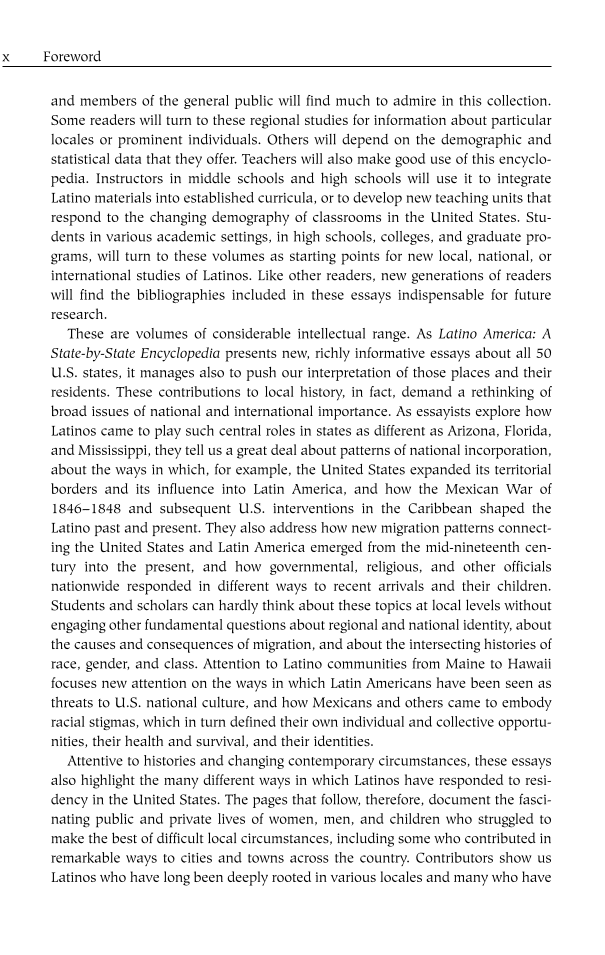and members of the general public will find much to admire in this collection. Some readers will turn to these regional studies for information about particular locales or prominent individuals. Others will depend on the demographic and statistical data that they offer. Teachers will also make good use of this encyclo- pedia. Instructors in middle schools and high schools will use it to integrate Latino materials into established curricula, or to develop new teaching units that respond to the changing demography of classrooms in the United States. Stu- dents in various academic settings, in high schools, colleges, and graduate pro- grams, will turn to these volumes as starting points for new local, national, or international studies of Latinos. Like other readers, new generations of readers will find the bibliographies included in these essays indispensable for future research. These are volumes of considerable intellectual range. As Latino America: A State-by-State Encyclopedia presents new, richly informative essays about all 50 U.S. states, it manages also to push our interpretation of those places and their residents. These contributions to local history, in fact, demand a rethinking of broad issues of national and international importance. As essayists explore how Latinos came to play such central roles in states as different as Arizona, Florida, and Mississippi, they tell us a great deal about patterns of national incorporation, about the ways in which, for example, the United States expanded its territorial borders and its influence into Latin America, and how the Mexican War of 1846–1848 and subsequent U.S. interventions in the Caribbean shaped the Latino past and present. They also address how new migration patterns connect- ing the United States and Latin America emerged from the mid-nineteenth cen- tury into the present, and how governmental, religious, and other officials nationwide responded in different ways to recent arrivals and their children. Students and scholars can hardly think about these topics at local levels without engaging other fundamental questions about regional and national identity, about the causes and consequences of migration, and about the intersecting histories of race, gender, and class. Attention to Latino communities from Maine to Hawaii focuses new attention on the ways in which Latin Americans have been seen as threats to U.S. national culture, and how Mexicans and others came to embody racial stigmas, which in turn defined their own individual and collective opportu- nities, their health and survival, and their identities. Attentive to histories and changing contemporary circumstances, these essays also highlight the many different ways in which Latinos have responded to resi- dency in the United States. The pages that follow, therefore, document the fasci- nating public and private lives of women, men, and children who struggled to make the best of difficult local circumstances, including some who contributed in remarkable ways to cities and towns across the country. Contributors show us Latinos who have long been deeply rooted in various locales and many who have x Foreword
Document Details My Account Print multiple pages
Print
You have printed 0 times in the last 24 hours.
Your print count will reset on at .
You may print 0 more time(s) before then.
You may print a maximum of 0 pages at a time.






























































































































































































































































































































































































































































































































































































































































































































































































































































































































































































































